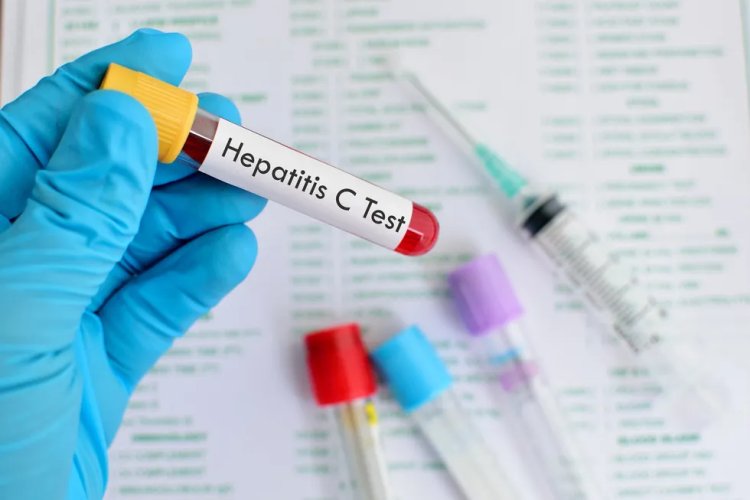Baby Boomers and Hepatitis C: Why is it important to pay attention to this age group?
Hepatitis C is one of the most underrepresented and often overlooked viral infections, despite its lack of publicized status. The transmission of hepatitis C through blood-to-blood contact can cause either short-term and acute symptoms (acute) or chronic episodes (chronal infection) lasting for several years. Typically, individuals don't feel anything until it becomes too late. What does this mean? When symptoms become evident, hepatitis C can lead to cirrhosis, liver cancer or even complete liver failure. What are the potential risks?

The baby boomers are experiencing a higher rate of unemployment and lower rates than other generations. Those born between 1945 and 1965 may have been advised to undergo a hepatitis C screening. But why this generation? Why now?
The emergence of the Baby Boomer Connection.?

The Centers for Disease Control and Prevention (CDC) first issued testing guidelines in 1998. They were definite, concentrating on "high-risk" scenarios.
Individuals who received blood transfusions before 1992, the year when blood donations began testing for hepatitis C.
Individuals receiving clotting factors before 1987.'
Patients undergoing long-term hemodialysis.
Individuals who used injection drugs.
On paper, these benchmarks were logical. In practice? They missed the mark. Too many doctors failed to ask the right questions and many patients were not willing participants in a voluntary exchange for personal information about their past drug use. This led to cases being concealed.
Therefore, the CDC abandoned its limited approach. In 2012, the organization voted to adopt a comprehensive new recommendation that all adults born between 1945 and 1965 should undergo hepatitis C testing once, regardless of their individual risk factors.
It was a difficult task to comprehend the reasoning. Baby boomers had a prevalence rate of over 3 in 100, which is five times higher than other generations. This group was responsible for approximately 75% all hepatitis C cases in the U.S.". Diagnosis was determined to find those who had been carrying the virus for decades, often without being aware of their existence.
Why did boomerangs have a hard time getting through school?

This is the million-dollar question. Researchers attribute this to a combination of cultural and medical factors.?... Boomers grew up in an age where: ".
The use of injection drugs experienced a surge in popularity, especially during the 1970s and 1980.
Unlike today, medical procedures were not as cautious and involved the use of syringes for recovery or the transfer of unscreened blood.
It wasn't until 1989 that Hepatitis C was officially identified, allowing it to spread without detection for many years.
In essence, boomers were exposed to more frequently during a time when preventive measures were not as robust as they are today.
Why Is Screening More Important Than Ever? i.e.
The screening of individuals is no longer just a suggestion, but essential to public health. Here's why:
Hepatitis C is silent but deadly, and it raises the likelihood of cirrhosity in some individuals as well as liver cancer and premature death. Until damage is greater, most individuals do not experience illness.
Recent studies indicate that hepatitis C can lead to heart disease, kidney disease and diabetes, in addition to the liver. There is more than one liver issue.?
The treatment is revolutionary: The days of the harsh, months-long treatments are gone. Shorter courses of oral antiviral medications can cure over 95% of cases today. They're productive, nourishing, and widely accessible.
The screening process can prevent tragedy and quickly restore health.?
The Greater Idea: A Global Strike to Get Rid of Hepatitis C.

According to the WHO, a grand objective is to decrease new hepatitis C infections by 90% and fatalities by 65% by 2030. Some nations are already on course with aggressive nationwide screening and easy access to treatment.
The U.S. has been slower to catch up. Despite the science, many individuals remain unaware of their condition, and numerous cases go undiagnosed until later. This is particularly concerning. WHO's goals require the implementation of universal screening among baby boomers. Why is this necessary?
The Takeaway for Baby Boomers.
Screening is considered a life-changing blood test, especially if you were born between 1945 and 1965. Think about it: It is a fast, easy, and potentially life-saving method that can provide you with peace of mind.
The term "silent killer" is a derogatory label for Hepatitis C. Still, there are other possibilities besides silence. Baby boomers can turn a quiet threat into cured condition with the right test and today’s powerful treatments.
What's Your Reaction?




















